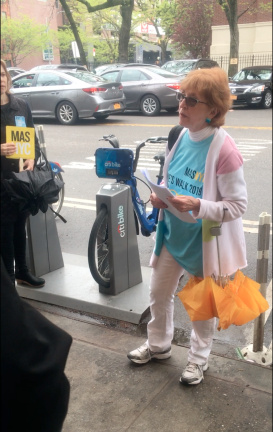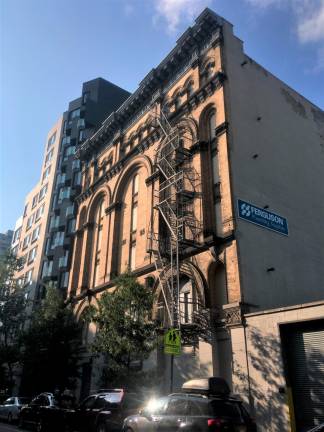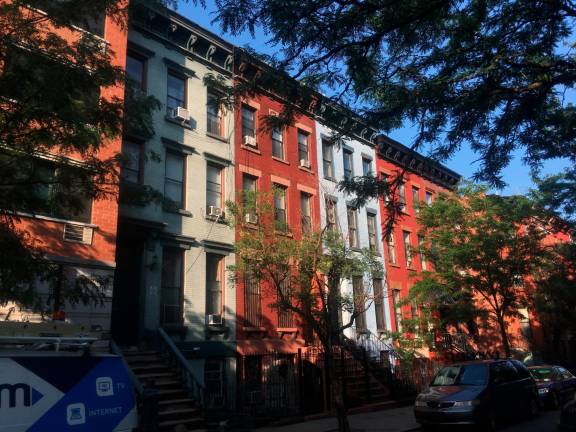East Harlem Gains a
National Historic District
The long-sought designation will help the neighborhood preserve its unique character as redevelopment pressures continue to grow



By Diana DuCroz
The hard work of a small group of neighborhood advocates paid off this summer when East Harlem received its first official historic district designation. On July 10, 2019, the new ‘East Harlem Historic District’ was listed in the National Register of Historic Places, the country’s official record of historic sites worthy of preservation. The district was listed in the State Register of Historic Places in March.
The volunteer coalition formed several years ago under the name Landmark East Harlem, after members of several existing organizations – CIVITAS, East Harlem Preservation, Ascendant Neighborhood Development and the Marcus Garvey Park Alliance – found a common interest in protecting the neighborhood’s historic fabric from growing redevelopment pressures.
“It’s seriously grassroots,” said Joanna Delson, an East Harlem resident and founding member of Landmark East Harlem, who serves on the board of CIVITAS, a nonprofit focused on quality of life issues within the Upper East Side and East Harlem.
With financial and technical help from the state historic preservation office and several preservation nonprofits, including the Municipal Art Society and the Preservation League of New York State, the group commissioned a field survey of every building in the proposed district, prepared a detailed written history of the neighborhood, and held two public workshops to educate the community about the project.
Historic designation is available at the city, state, and federal level, but the requirements and benefits vary. Unlike city designation, which limits what owners can do with their properties, East Harlem’s new national and state listings impose no restrictions on private property owners, but offer financial benefits to those owners who choose to restore their buildings according to established guidelines.
The new district, centered between East 114th and East 120th Streets near First and Pleasant Avenues, covers roughly two dozen blocks, only a small portion of East Harlem. Roughly 85% of the 800 buildings within the district’s irregularly-shaped boundary are considered ‘contributing,’ meaning they are of historic value to the district.
According to the National Register nomination report, East Harlem is historically important for two key reasons: its long record as a working-class enclave for a succession of ethnic groups – in particular Jewish, Italian, and Puerto Rican immigrants - and for its relatively intact clusters of architectural fabric from the late 19th and early 20th centuries, which is closely tied to these communities.
“Of all its buildings, perhaps the row houses – among the oldest buildings in the district – are East Harlem’s least well-known resource,” states the National Register report. “The district’s tenements rival in quality, if not overall number, their better-known counterparts on Manhattan’s Lower East Side.”
In addition to the historic row houses, flats, and tenement buildings are several notable commercial structures and historic churches, including the Church of Our Lady of Mount Carmel on East 115th Street, long associated with the city’s Italian community, and Casa Latina Music on East 116th Street, a surviving link to the neighborhood’s Puerto Rican musical heritage.
Even with the new listings, East Harlem is well behind the rest of Manhattan in the number of historic-designated properties, despite a cultural and architectural history comparable to many other neighborhoods.
“We have 25 individual landmarks in East Harlem – which is very low compared to other neighborhoods,” said Kathleen Benson, referring to city-designated landmarks. Benson, a key member of Landmark East Harlem, represents East Harlem Preservation, a separate organization focused on preserving the neighborhood’s cultural history and diversity.
The new district is only the first step in the group’s long-term strategy to bring increased recognition and preservation to East Harlem’s historic resources. Last week, Landmark East Harlem was awarded a $10,000 grant to survey the portion of East Harlem north of East 125th Street for a second historic district nomination. A third district for the blocks around East 106th Street, and perhaps a city-designated district with its stronger protections, are also on the wish list.
“If this neighborhood had more money, had people with more voice,” said Joanna Delson, “there would have been sections of it landmarked long ago when the city was actively doing more landmarking. And that’s true in Harlem in general. So that’s a big part of this story.”
“When a neighborhood doesn’t have a voice,” Delson said, “it’s not really in control of the community as much as it should be.”
Earlier efforts by advocates to seek historic designation never took off, but with the neighborhood now experiencing rising rents and threats of displacement along with the planned Second Ave Subway extension and contentious 2017 East Harlem rezoning, the time was finally ripe for this historic district nomination. The 2016 East Harlem Neighborhood Plan lists the preservation of important East Harlem buildings and neighborhood character as a priority objective.
“There’s a lot on the community board’s agenda,” said Chris Cirillo, executive director of Ascendant Neighborhood Development and member of Landmark East Harlem. “That’s really representative of East Harlem over many, many years. There are so many other issues, more pressing issues, just in terms of people’s daily lives, that preservation has really not been something that they’ve had the leisure time to spend thinking about.”
The group’s aspirations for East Harlem go well beyond just saving old buildings.
“We don’t see ourselves as just being about bricks and mortar,” said Cirillo. “It’s about preservation as a tool for community preservation, and, as a way of planning and managing the growth that’s happening in the neighborhood and the change that’s happening in the neighborhood, so that people still feel like it’s the neighborhood that it has been, and that we’re preserving the things that are important, and that people recall from the past and want to see continue into the future, even as there will be change.”